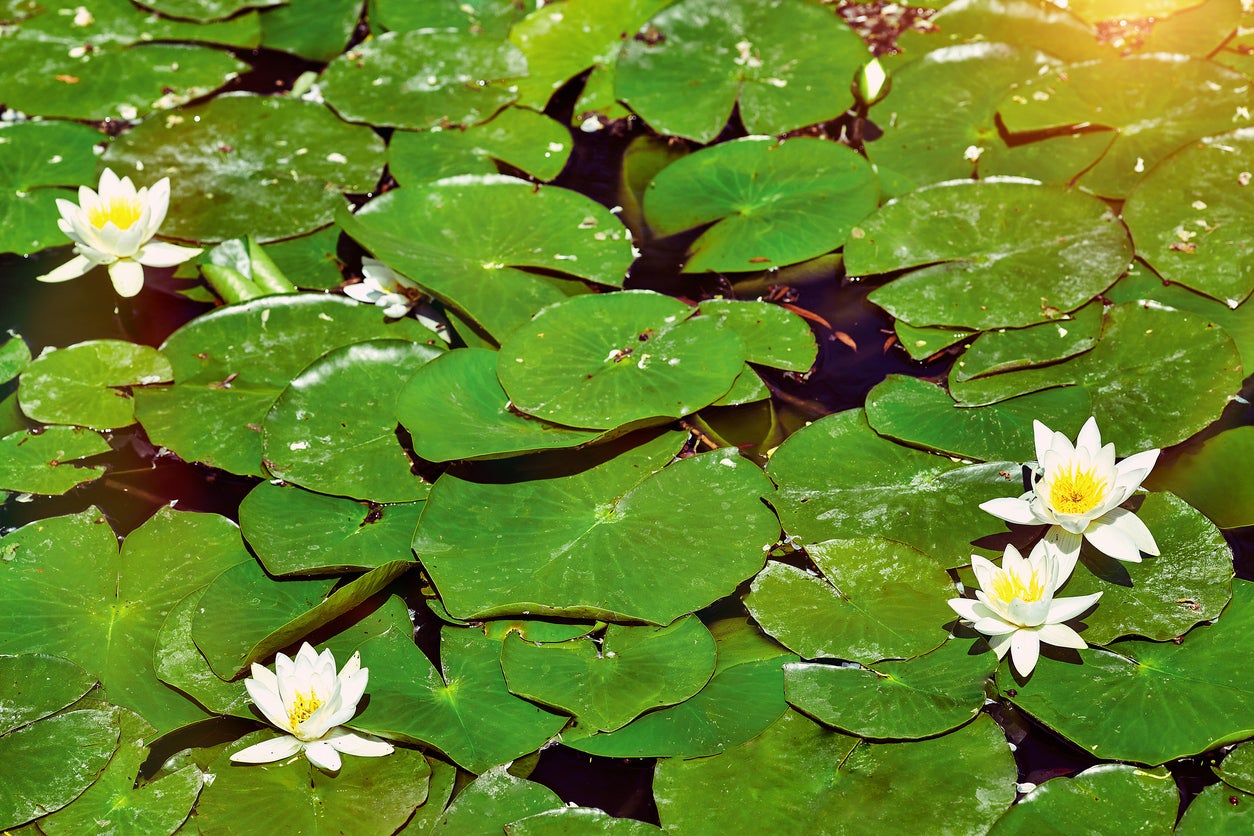Water Lily Weed Control: Learn About Water Lily Management In Ponds


Natural or man-made ponds in the garden landscape can serve a variety of purposes. While some may choose to create a fish pond, other homeowners may focus more on the aesthetic aspect of this water feature. Regardless, the presence of plant life is an integral part of a healthy pond ecosystem. Aquatic plants, such as the water lily, serve many purposes too. In addition to creating oxygen, aquatic plants provide necessary habitat for wildlife. However, controlling water lilies (and other plants) is especially important when the plant cover becomes too thick.
Water Lily Weed Info
Though beautiful, water lily management is necessary when plants begin to invade the vast majority of the pond. Too many plants growing in the water may be a major cause for concern, such as the reduction of available oxygen (which the plants absorb at night) and negative impact on the overall health of fish. However, water lily management may be somewhat challenging.
How to Stop Water Lilies
As one would imagine, the underwater nature of these plants makes water lily control quite interesting. In most cases, the easiest way in which to manage water lily weed is through prevention. Newly introduced waterlily plantings should always be made in the form of potted plantings, as this will help to reduce the likelihood that the plant will be able to spread through underground rhizomes.
In already established plantings, there are some other options for controlling water lilies. Removing the roots and rhizomes of the plant is possible, however, difficult. In most cases, this process will require tools specifically designed for the removal of aquatic weeds. Care also must be taken, as incomplete removal may cause the spread of the rhizomes.
Many growers choose to implement the use of weed barrier within the pond. Simply, pond weed barrier is placed at the bottom of the body of water after all water lily stalks and foliage have been removed. This barrier does not allow sunlight to reach the rhizomes, thus ensuring that they do not return.
Chemical herbicides are also an option for the elimination of water lilies from ponds. However, if choosing to implement these practices, it is imperative to only use products that have been specifically identified for use in ponds. Before use, always read all precaution and instruction labels in order to ensure its safe use.
Sign up for the Gardening Know How newsletter today and receive a free copy of our e-book "How to Grow Delicious Tomatoes".

Tonya Barnett has been gardening for 13 years. Flowers are her passion. She has transformed her backyard into a cut flower garden, which she regularly chronicles on her YouTube channel http://www.youtube.com/@tonyawiththeflowers.